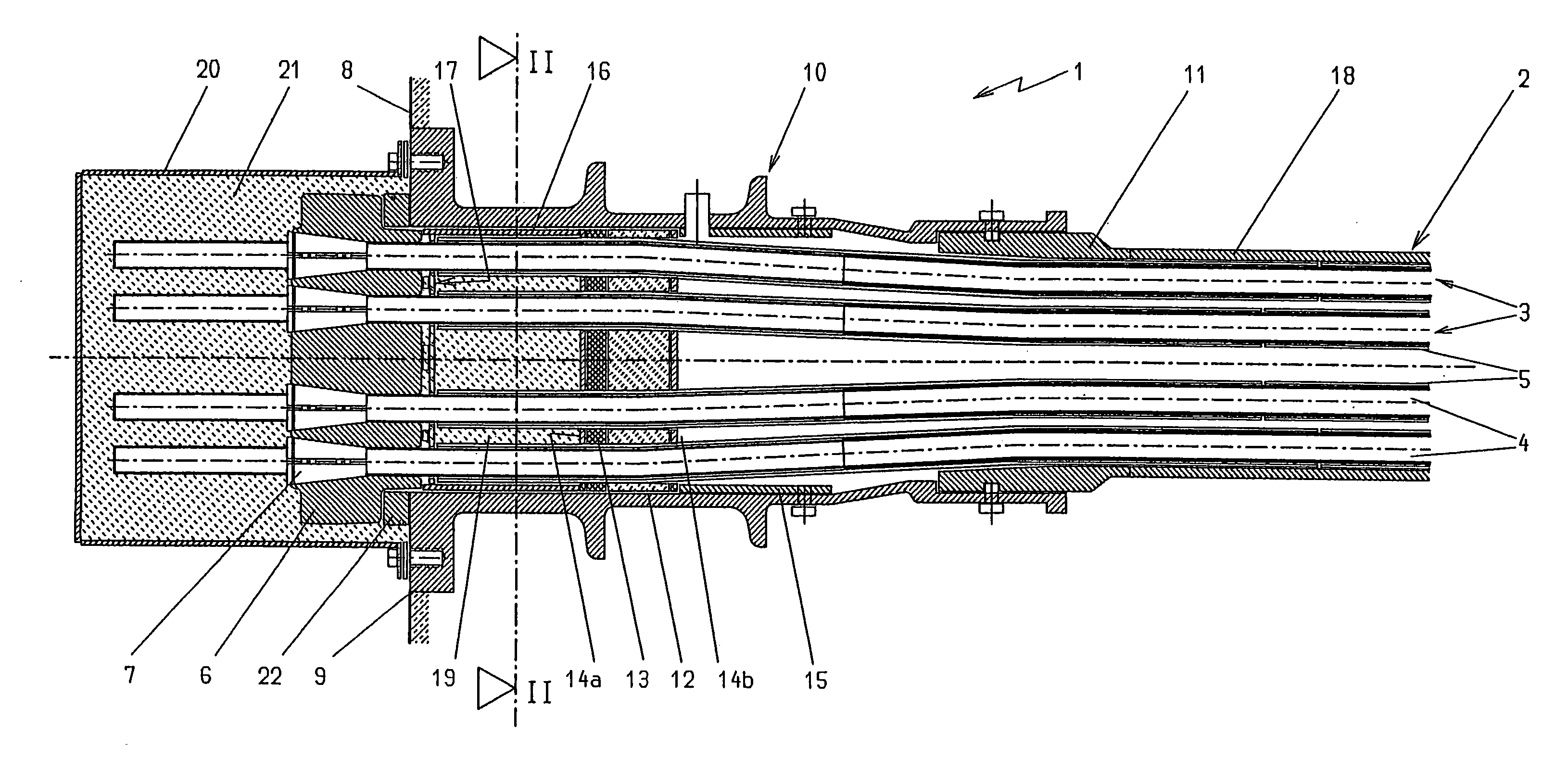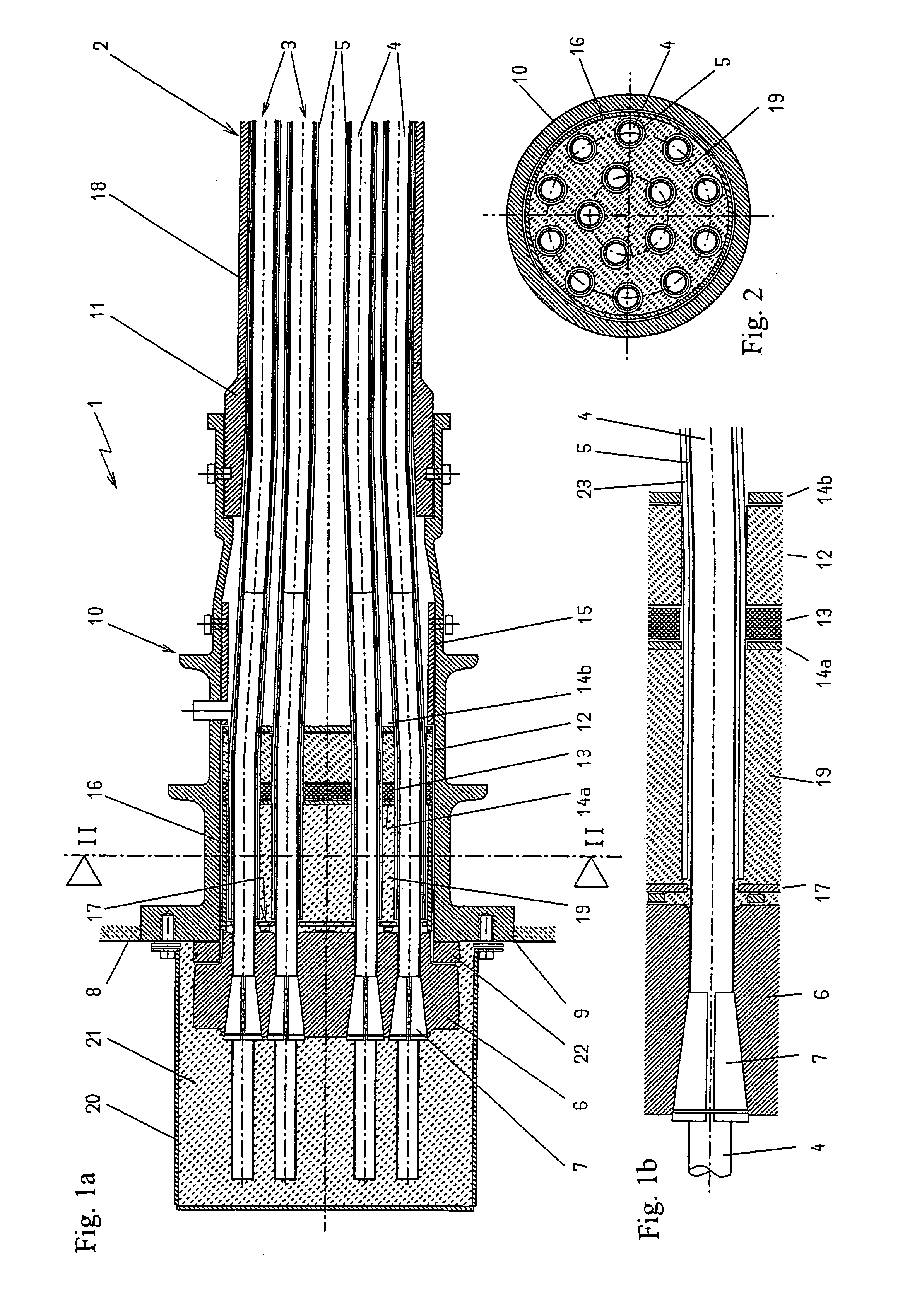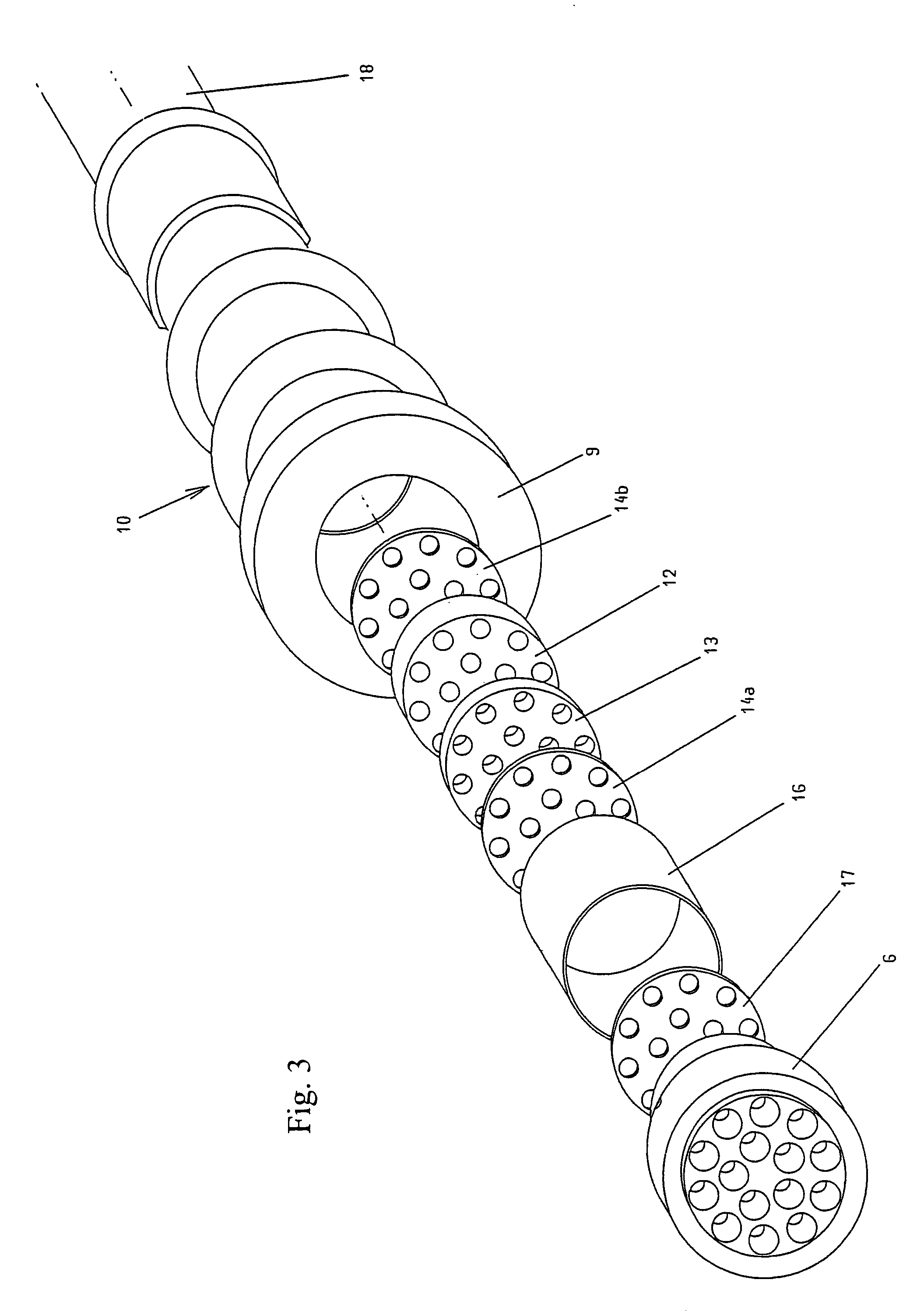Corrosion-resistant tension member, particularly a tendon for prestressed concrete
a tension member and prestressed concrete technology, which is applied in the direction of girders, joists, trusses, etc., can solve the problems of inability to return to the original position of sealing parts without additional energy, difficulty in installation, and difficulty in ensuring the stability of the sealing parts, so as to simplify the replacement of individual strands, facilitate installation, and save energy
- Summary
- Abstract
- Description
- Claims
- Application Information
AI Technical Summary
Benefits of technology
Problems solved by technology
Method used
Image
Examples
Embodiment Construction
[0022]In FIG. 1a, the anchoring area 1 of a tension member 2 of this invention is illustrated in a longitudinal section. In the illustration, the tension member 2 is a tendon, which, as shown in FIG. 2, can be formed of fifteen individual tension elements 3. The tension elements 3, in turn, are formed of, for example, monostrands, that is, steel wire strands 4, which are surrounded by sheaths 5 made of plastic, particularly PE (poly ethylene), to protect against corrosion. The spaces between the individual wires (not shown) of the strands 4 and the PE sheath 5 are filled in with a corrosion-resistant material, for example, grease.
[0023]The strands 4 are anchored to a steel anchor plate 6 by multi-part ring wedges 7. For this purpose, the anchor plate 6 has bores with an inner cylindrical area, which on its exposed side extends into a conical area (FIG. 1b).
[0024]On the outer surface 8 of a structure, the anchor plate 6 is supported, via an intermediate ring 22, against a flange-like...
PUM
 Login to View More
Login to View More Abstract
Description
Claims
Application Information
 Login to View More
Login to View More - R&D
- Intellectual Property
- Life Sciences
- Materials
- Tech Scout
- Unparalleled Data Quality
- Higher Quality Content
- 60% Fewer Hallucinations
Browse by: Latest US Patents, China's latest patents, Technical Efficacy Thesaurus, Application Domain, Technology Topic, Popular Technical Reports.
© 2025 PatSnap. All rights reserved.Legal|Privacy policy|Modern Slavery Act Transparency Statement|Sitemap|About US| Contact US: help@patsnap.com



